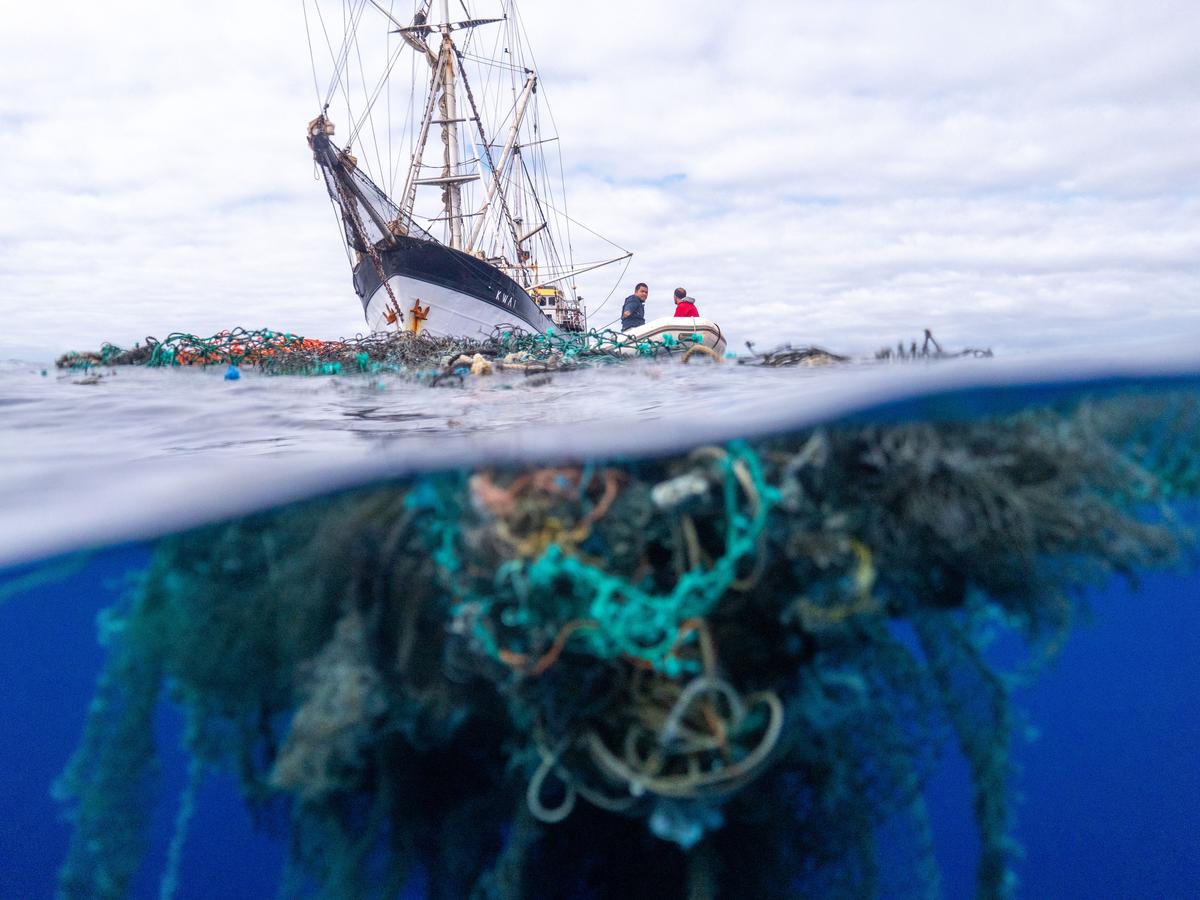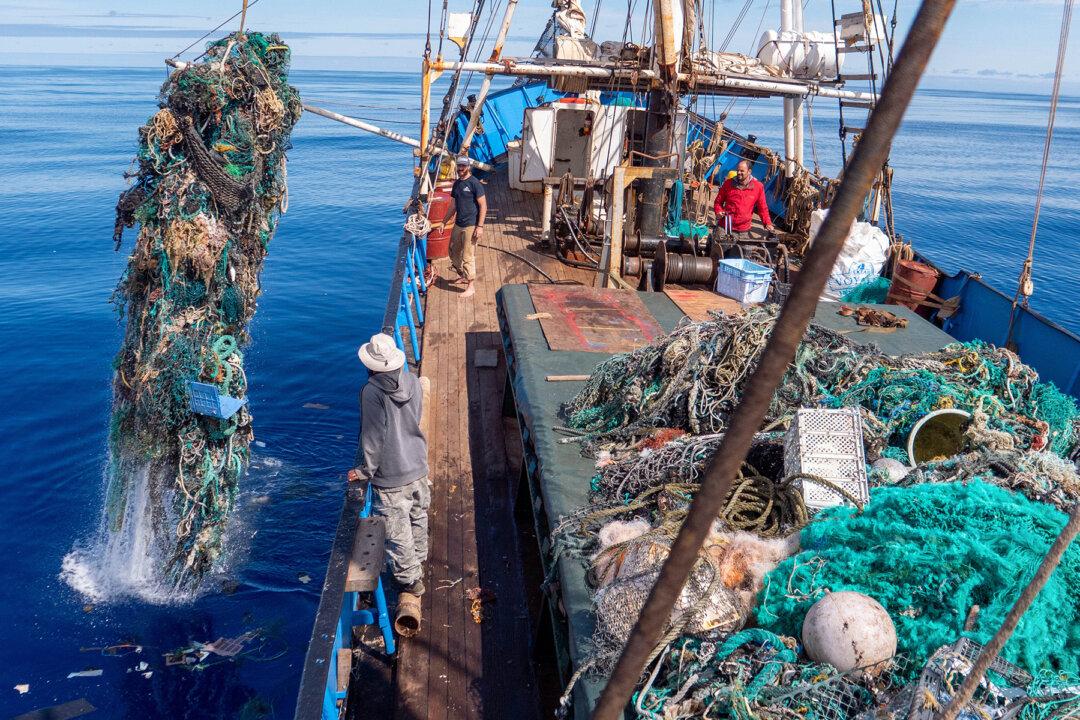A massive ocean cleanup operation has performed the largest plastic removal in recorded history by hauling 103 US tons (93,440 kg) of consumer waste and commercial fishing nets from the North Pacific Subtropical Convergence Zone, more commonly known as the Great Pacific Garbage Patch or Gyre.

An abandoned fishing net pictured in front of the Ocean Voyages Institute's ship Courtesy of Ocean Voyages Institute





